Two huge sharks—one that must be at least 10 feet long—are suddenly right alongside the boat. In the sunlight, the creatures, both blue sharks, have cobalt, almost iridescent, coloring on the top portion of their bodies. After surfacing, they turn and swim down, too deep to be seen, then reappear in pursuit of the bait, which is two 10-inch mackerel tied to the end of a thick nylon string that the ship captain is pulling hand over hand. When one of the sharks reaches the waterline, its head leans and, in a single balletic movement, U-turns, momentarily revealing the animal’s white underbelly before darting back into the depths.
Our position: approximately 12 miles southeast of Montauk, New York, off the tip of Long Island, and 100 miles from the massively developed stretch of the Eastern Seaboard that geographers refer to—affectionately, disparagingly, or sometimes both—as the BosNyWash megalopolis.
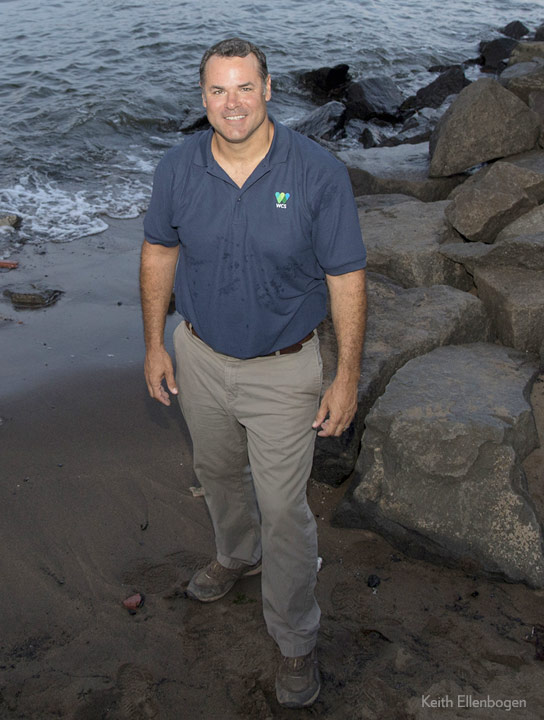
The sharks found us by following a trail of chum that, in the afternoon sun, looks like a winding streak of oil stretching back into our past. We have been chumming for a few hours and, by midday, the thinking is that we are going to come up empty. It happens. Caleb McClennen ’97 never seems to get impatient, though. To pass the time, McClennen and underwater photographer Keith Ellenbogen discuss wildlife in the surrounding waters, the politics of environmental protection, and globetrotting adventures (maritime and terrestrial, but mostly maritime) that McClennen has undertaken in recent years: in Indonesia, Alaska, the Marshall Islands, Belize, Madagascar, Tierra del Fuego, Seychelles. You get the idea.
Then the sharks finally hit. The swell by this point is about 4–5 feet, and a breeze sweeps over the steel-green surface of the water as McClennen and Ellenbogen start gearing up. McClennen is only seven weeks post-op after ACL replacement surgery on his right knee, and he has just returned from Utah on a red-eye after a meeting in Salt Lake City. Oh—and there is a one-year-old baby at home. Nevertheless, McClennen is all smiles as he prepares to swim with sharks in the cold, dark waters of the Atlantic. He pulls a wetsuit, gloves, booties, hood, mask, fins, and weights from a bulging and faded navy-blue suitcase that has probably been schlepped, dragged, and ferried to more magnificent—and vulnerable—places than just about any suitcase on Earth.
As vice president for global conservation at the Wildlife Conservation Society (WCS), McClennen helps run a massive operation, with some 250 scientists and field programs scattered over 60 countries and throughout the world’s oceans. From the remote mountains of Afghanistan to the windswept wilderness of southern Chile, WCS is in a sprint to help conserve the world’s largest and most ecologically intact wild places, home to more than 50 percent of the world’s biodiversity and sustaining more than 300 million people. And the aim is to do it by 2020.
But one part of the world where you may not have expected to find someone like McClennen, and where, until fairly recently, he might not have expected to find himself, is in these waters, just offshore from one of the most developed and heavily trafficked coastal areas of the world.
“This is the near frontier,” he says. Due to the vicissitudes of history—weird factors like where fishing fleets depart from and where research institutions are located—the waters off the coast of New England are comparatively well known, or at least have undergone a lot of scientific study. The same goes for the marine environment east of the Southeastern states. “But offshore New York is like a blank spot.”
McClennen and his team hope to change that. This swath of Atlantic Ocean, an area WCS has dubbed the New York Seascape, covers roughly 16,000 square miles of ocean that is surprisingly rich in biodiversity. Inhabitants include: loggerhead sea turtles; harbor porpoises; short-finned pilot whales; tuna; right whales, osprey; great shearwaters; blue, mako, and great white sharks; cownose rays; tilefish; and abundant colonies of corals. During the last 5–10 years, further understanding of the wildlife and ecological value of these waters has motivated conservation groups, and WCS in particular, to push for formal protection of the area as a National Marine Sanctuary. Ellenbogen’s job here today, and for much of the summer, is to take photographs—portraits, really—of various marine species that inhabit this little-known treasure. (Ellenbogen’s photographs of the New York Seascape were recently on display at the United Nations, as well as in an outdoor exhibit beneath the Brooklyn Bridge.)
McClennen and WCS see huge opportunity here, not only to protect what warrants protecting, but also to catalyze awareness. That is how McClennen puts it, anyway; others might call it a slap in the face. Shipping lanes, fishing grounds, offshore energy projects, oil and gas development, plastics, climate change, and everything else that potentially impacts marine life—is humanity going to get its act together and safeguard the world’s most ecologically valuable places or not? Without knowing and appreciating biodiversity in our own backyard, probably not.
McClennen tests his regulator, adjusts the weights on his belt, and goes over the dive plan once more. The waters here are so cloudy that it’s hard for a diver to see more than a few feet ahead, which explains Ellenbogen’s hefty lighting gear and, perhaps, society’s relative ignorance about this biodiversity-rich region. “It’s hard to care about what you don’t know is there,” says Ellenbogen.
After tucking in any bits of exposed skin, it’s time to swim. Ellenbogen is first, climbing down a ladder off the back of the boat so that a deckhand can pass him the hulking camera equipment, which looks like a football helmet crossed with a two-foot-long quadcopter. McClennen does a little extra calculus about the most knee-friendly method of entry, determining in the end to walk straight back off the boat like a high-stepping John Cleese.
The divers swim around to port so they can hold onto an anchor line; currents rip in this part of the Atlantic, and the line allows them to pull themselves down into the depths without losing track of their position. In a few moments quiet bubbles on the surface are the only sign that the two men exist. A few gulls circle overhead, while the sharks—there are now three—continue to pursue the mackerel, swimming up close to the boat and, we hope, striking just the right poses for Ellenbogen’s camera.
What I finally put together is that being out on the blue water means being separate from humanity.”
McClennen grew up in Holliston, Massachusetts. “There are a lot of marine biology and conservation people who got into this field because of a fascination with a specific species or because they love fishing,” he says. “I wasn’t that kid. I was a horrible fisherman.” He may not have been born with a love for marine life or instinct to stick up for it, but McClennen’s father was in education, and both cartography and oceanography run in the family. And sailing around Cape Cod’s Pleasant Bay, McClennen did take an early interest in ocean systems—tides, waves, currents, nearshore versus offshore habitats, and so on—and the interplay of it all.
Studying geography at Middlebury under Bob Churchill, McClennen grasped the power of geographic information systems (GIS) just as potential applications for this technology were exploding. After graduating, McClennen joined Semester at Sea, first as a student and then as a staffer. For five years he lived on tall ships and yachts, sailing throughout the Atlantic and Pacific. The experience was, as these things tend to be, hands-on, formative, and wonderful—but something was missing.
He says that when the boat came ashore in coastal communities or islands, he witnessed the bustling fish markets, locals dependent on seafood, maritime industries and their influence on ocean life, and, perhaps most significant of all, widespread poverty. “What I finally put together is that being out on the blue water means being separate from humanity.” So after a stint working in the Marshall Islands, where McClennen built the first GIS for the archipelago and even helped negotiate a maritime boundary between the Marshalls and the tiny nearby nation of Nauru, he enrolled in the Fletcher School of Law and Diplomacy, where he earned a PhD studying development economics, environmental policy, and international law.
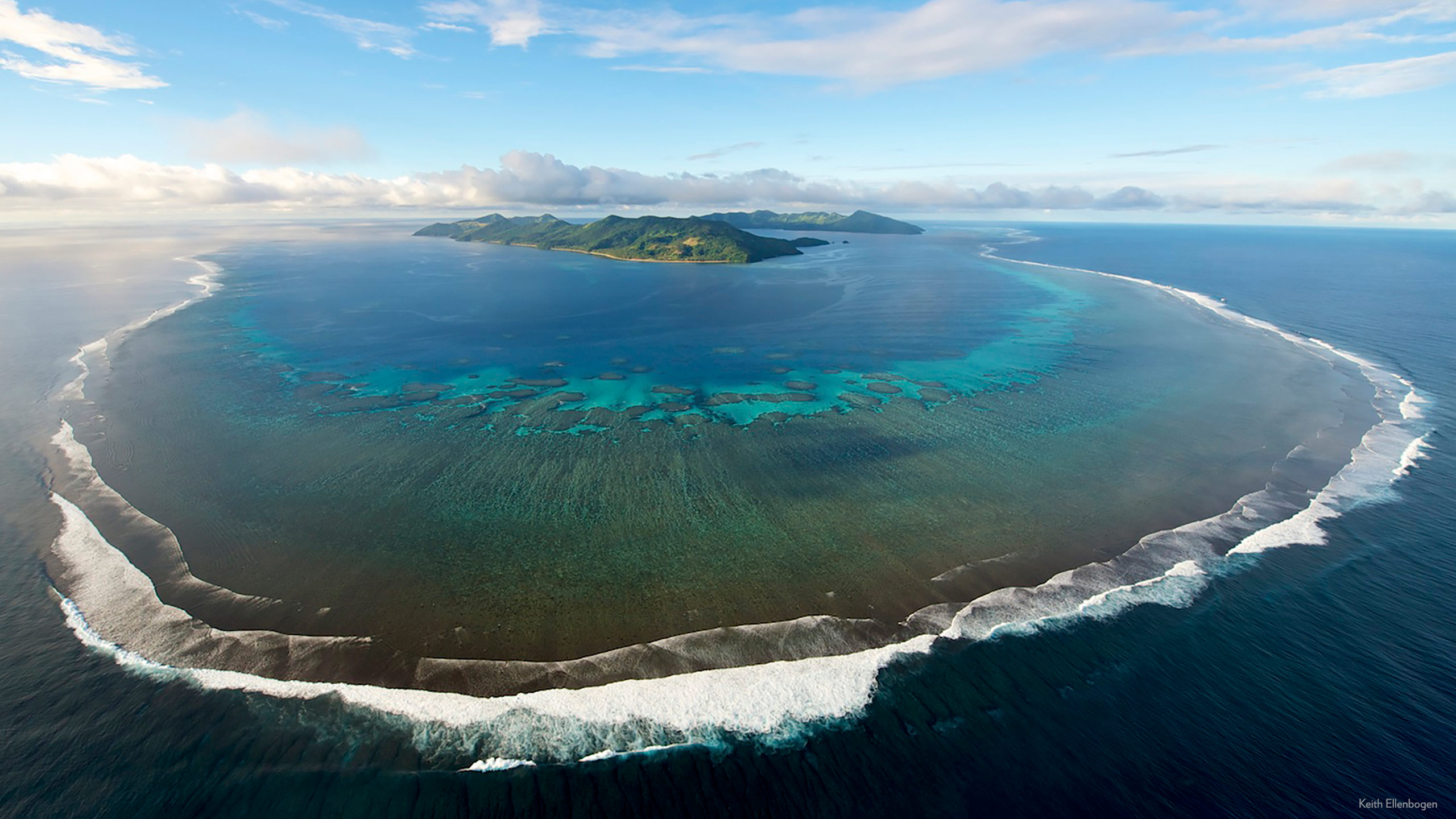
In 2007, McClennen took a job with WCS as an assistant director of marine conservation and was soon promoted to director. (His wife, also an oceans nerd, works as the environment director for the Educational Foundation of America .) Between 2009 and 2015, as executive director of WCS’s marine conservation program, McClennen led the organization’s push to establish Marine Protected Areas around the globe and expand existing ones. He was instrumental in growing a $3 million operation into a $15 million one, opening programs in more than a dozen new countries and overseeing some 250 staff. He also designed and launched the Global Partnership for Sharks and Rays, which works to combat hunting, fishing, and bycatch killing. “Sharks are treated like fish but their reproductive system is more like a mammal’s,” he says, meaning they have one offspring now and then, as compared with fish that can have hundreds, even thousands, of offspring. This is one of the primary reasons why many shark and ray populations are in decline. By some estimates, 90 percent of the top ocean predators are gone.
In 2016, McClennen became WCS’s vice president for global conservation. He is ecosystem agnostic now, trying to “reconnect with green things,” he jokes. Still, he misses having time in the water, which makes the opportunity to observe Ellenbogen’s work near Montauk that much sweeter.
If the Wildlife Conservation Society isn’t one of the first organization names that comes to mind when you think about conservation, it may be because WCS has something of a split-personality problem. Founded more than a century ago, WCS used to be about zoos and the study of natural history. To most people today, it’s recognized primarily as the name behind the iconic Bronx Zoo (as well as zoos in New York’s Central Park, Prospect Park, and Queens, and the New York Aquarium). Yet WCS’s program in international conservation, spread over 60 countries, has a budget of $110 million, which exceeds the operating budgets of the four zoos and aquarium.
And in a way, zoos are antithetical to the mission of wildlife conservation. Just think about the word wildlife. McClennen himself recognizes the confusion this blended mission may engender, but says it’s a false dichotomy. For one thing, zoos have been critical during past efforts to save species from extinction—the American bison, the California condor—and they likely will be again. “You don’t need a zoo,” says McClennen, meaning the work could technically be done without the public-facing exhibits and enclosures for live animals. “But you need the resources, facilities, and support.”
The other essential role for zoos, of course, and especially the Bronx Zoo, is education. The Bronx Zoo is free for schoolchildren—“the real audience,” says McClennen. And for many of those visitors, a trip to the zoo may prove to be one of the most up-close-with-nature experiences of their lives. And you don’t have to be a genius to know that conservation in the future will be that much more difficult if the public isn’t educated, which is to say doesn’t care.
Bridging those two missions—education through zoos and conservation of biodiversity strongholds scattered about the globe—is the New York Seascape program. When McClennen first started at WCS, plans for revamping the New York Aquarium on Coney Island were just being born. “We began thinking that we needed to see what’s happening locally in conservation.” They hired a consultant to take a look and were stunned to learn that conservation science about nearby habitats was scant.
McClennen was especially surprised that so little was known about Hudson Canyon. Larger than the Grand Canyon, this undersea feature cuts across the continental shelf. It’s the biggest undersea canyon on the Atlantic Seaboard and, as it turns out, home to a dazzling array of species. Yet little is known about what further development—more shipping traffic, offshore energy, proposed oil and gas operations, and so on—might mean for this and surrounding marine habitats. “It was blatantly clear,” says McClennen, that the new New York Aquarium, and by extension WCS, needed to “be a big player in local conservation.”
A result of the remodeled aquarium, set to open next year, will be an exhibit devoted to marine ecology of these waters. The exhibit furthers the work of the New York Seascape program. Established by McClennen and colleagues and staffed by seven WCS personnel, the program supports projects such as Ellenbogen’s work to showcase local marine biodiversity, pursues public outreach projects such as a map and educational poster coproduced with the National Geographic Society, and funds ongoing research that will better inform policy decisions about the fate of these waters.
It was “a really basic heartbreak situation,” he says, and he has witnessed variations on this same theme all over the globe.
As we waited aboard the charter boat, wondering if we would even see a shark, I had a chance to ask McClennen how he does it: how he faces down today’s environmental and political realities without growing despondent.
Loss, he acknowledges, is the “constant backdrop.” Habitats get fragmented, polluted, or altered by climate change, while species populations are being decimated. When working in the Marshall Islands, McClennen watched as construction companies used dynamite to blow up the reef so they could build schools and airstrips.
It was “a really basic heartbreak situation,” he says, and he has witnessed variations on this same theme all over the globe. “In Africa, many countries are going through massive economic transition. Finally. But a lot of extractive industries done poorly can lead to [biodiversity] loss at an enormous scale. And once you lose it, especially on land, it’s hard to get it back.” (With marine ecosystems, recovering biodiversity is often more doable.)
But awareness of all that is wrong doesn’t overwhelm McClennen’s sense of pragmatism and vision. “There will be loss. Yet there are also many win-win solutions, especially with ocean conservation right now. Ten or twenty years ago, there was a lot more political opposition to ocean conservation, but now we’re seeing a lot more alignment between fishers and other resource communities when it comes to management.”
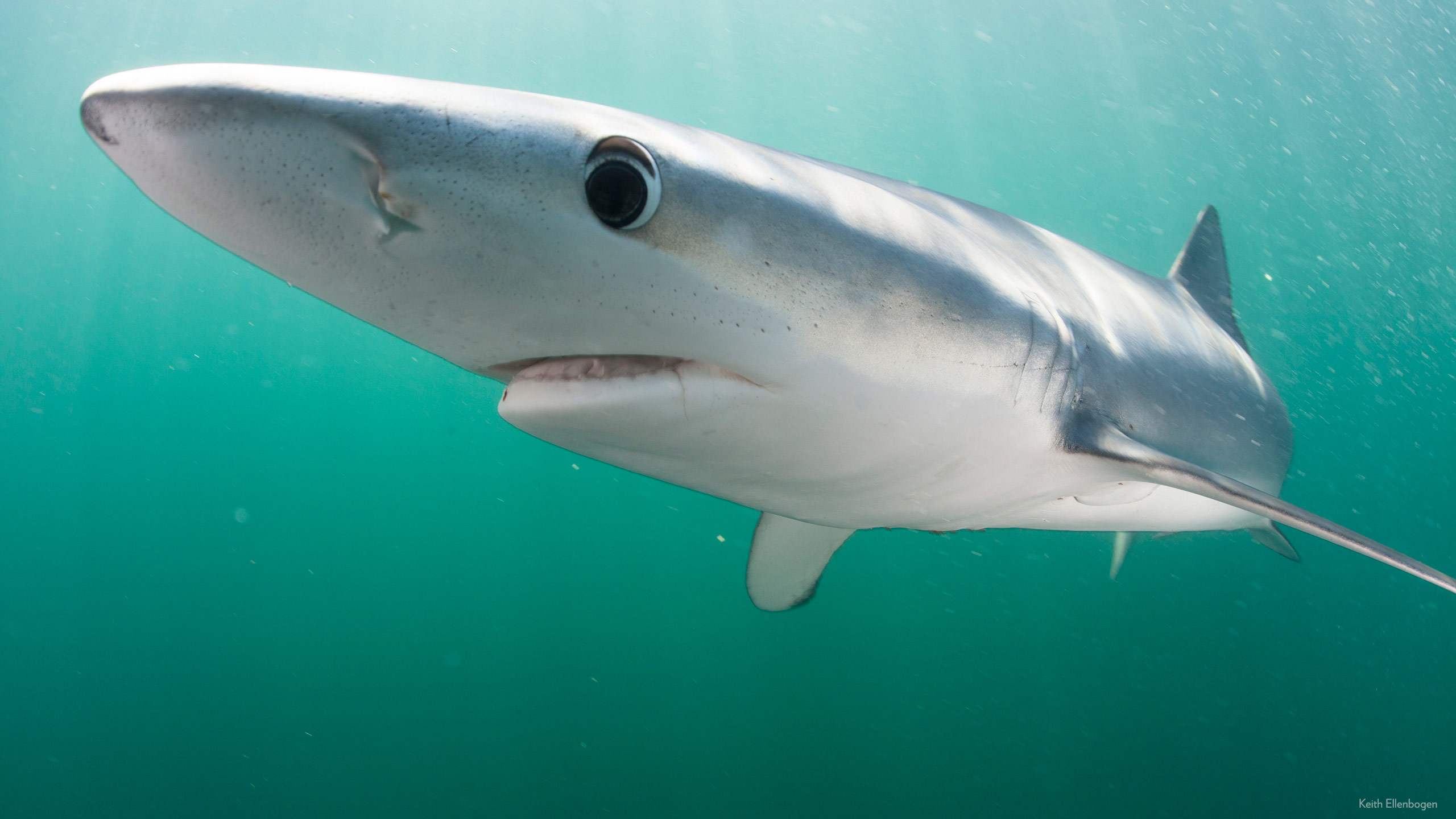
If you think about conservation from the management angle, not merely tallying losses, the work isn’t bleak. Besides, there are places and species on the rebound, he says, telling me about whales, tiger populations in India, and sea turtles in the Pacific. “You don’t work in this field without thinking about progress you can make.”
That being said, today’s political climate brings the challenge to a whole new level. In the near term—call it Stage 1—a White House that has expressed nothing but hostility toward conservation, environmental protection, and science itself may actually have a positive effect on global conservation efforts. People feel spurred to action, which often translates into donation surges, at least for more advocacy-focused groups like the Nature Conservancy, Environmental Defense Fund, Natural Resource Defense Council, and Sierra Club.
“We’re more of a technical partner, not a major advocacy organization, so we have not seen a big uptick [in donations] since the election,” says McClennen. But while President Trump may not be good for WCS, one could argue that Trump is good for environmental defense.
One would be wrong, though, because of Stages 2 and 3. In the medium term, explains McClennen, defunding (or even just redirecting) the work by government agencies such as USAID, EPA, and NOAA hurts WCS because of all the partnership projects underway, in which nonprofits like WCS team up with government to accomplish more science, conservation, or both. Meanwhile, big funding foundations like the David and Lucile Packard Foundation, which often support both research and advocacy, are having to shift more resources to advocacy—to the fight—thereby reducing the pool of money available for technical partners like WCS.
Finally, the most lasting impact of the Trump era may be the U.S. pullout of the Paris Agreement. Although the details of the reversal still need clarifying, pullout will mean lost financial support for the Green Climate Fund, which the U.S. had previously committed to.
“That hurts,” says McClennen. Yet he doesn’t say it in a defeated way. He says it in a way that simply signifies that there is indeed a lot of work to do. His comment reminds me of the hashtag #oceanoptimism, which has lately become a thing among ocean science and conservation types. The idea sprang from the minds of a few scientists and writers after they realized a few years ago just how pervasive pessimism about the fate of the oceans—and, by extension, the world—had become.
“An entire generation of scientists has now been trained to describe, in ever greater and more dismal detail, the death of the oceans,” wrote the Smithsonian Institution’s Nancy Knowlton and her husband, Jeremy Jackson. For some counterbalance, plug #oceanoptimism into your Twitter feed, and your morning will be filled with upbeat news about intertidal seagrass recovery in Wales, coastal cities banning plastic straws and utensils, and recovering populations of staghorn coral off the Florida coast.
To cynics, this has a whiff of naiveté, if not desperation; a catchphrase to live by because without it, the onslaught of grim information about marine pollution, overfishing, coral bleaching, bycatch, plastics . . . it’s just too much to bear. But time spent with someone like McClennen suggests otherwise. It suggests that the realities of marine science and conservation today are selecting for a new breed of conservationist, one equipped with a kind of forge-ahead pragmatism.
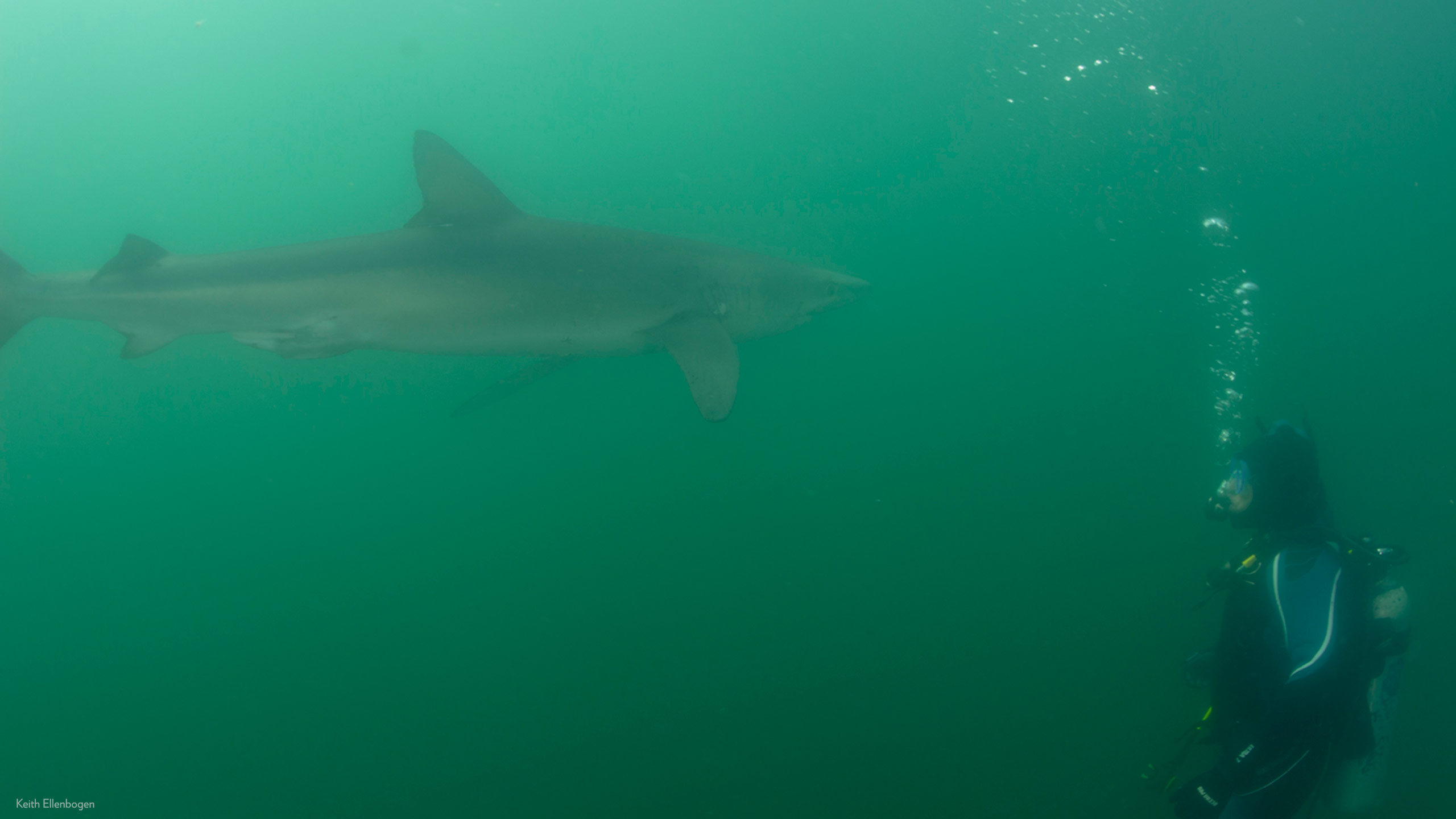
After close to 20 minutes, McClennen and Ellenbogen emerge from the first of two dives. McClennen climbs aboard, his blue fins onto the deck. He peels off the neoprene hood and is beaming, talking quickly with Ellenbogen about all that just happened in silence below.
“Those sharks rammed right into us!”
“They really look at you, you know?” says a jubilant Ellenbogen. “It’s such a treat. They really check you out. They don’t run away. They look at you.”
McClennen takes a fast chug from a Gatorade bottle and then, laughing, recounts how a shark swam straight at him, bumping him in the torso with its snout. “To most people, that’s unsettling. But to me, being around sharks while they’re feeding is relaxing!”
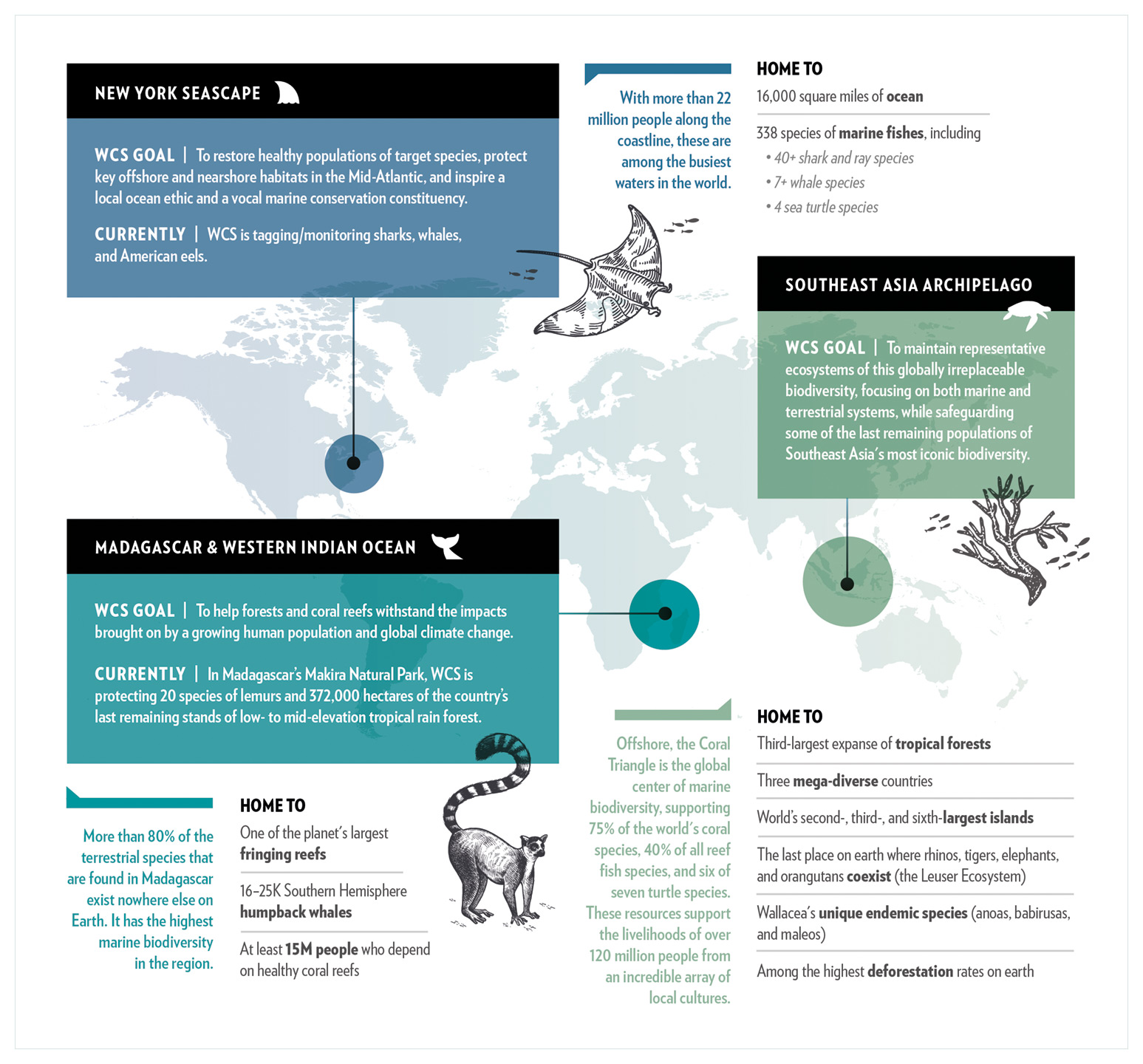
By 2020, WCS wants to conserve these 16 regions, which represent more than 50% of the world’s biodiversity.

Leave a Reply